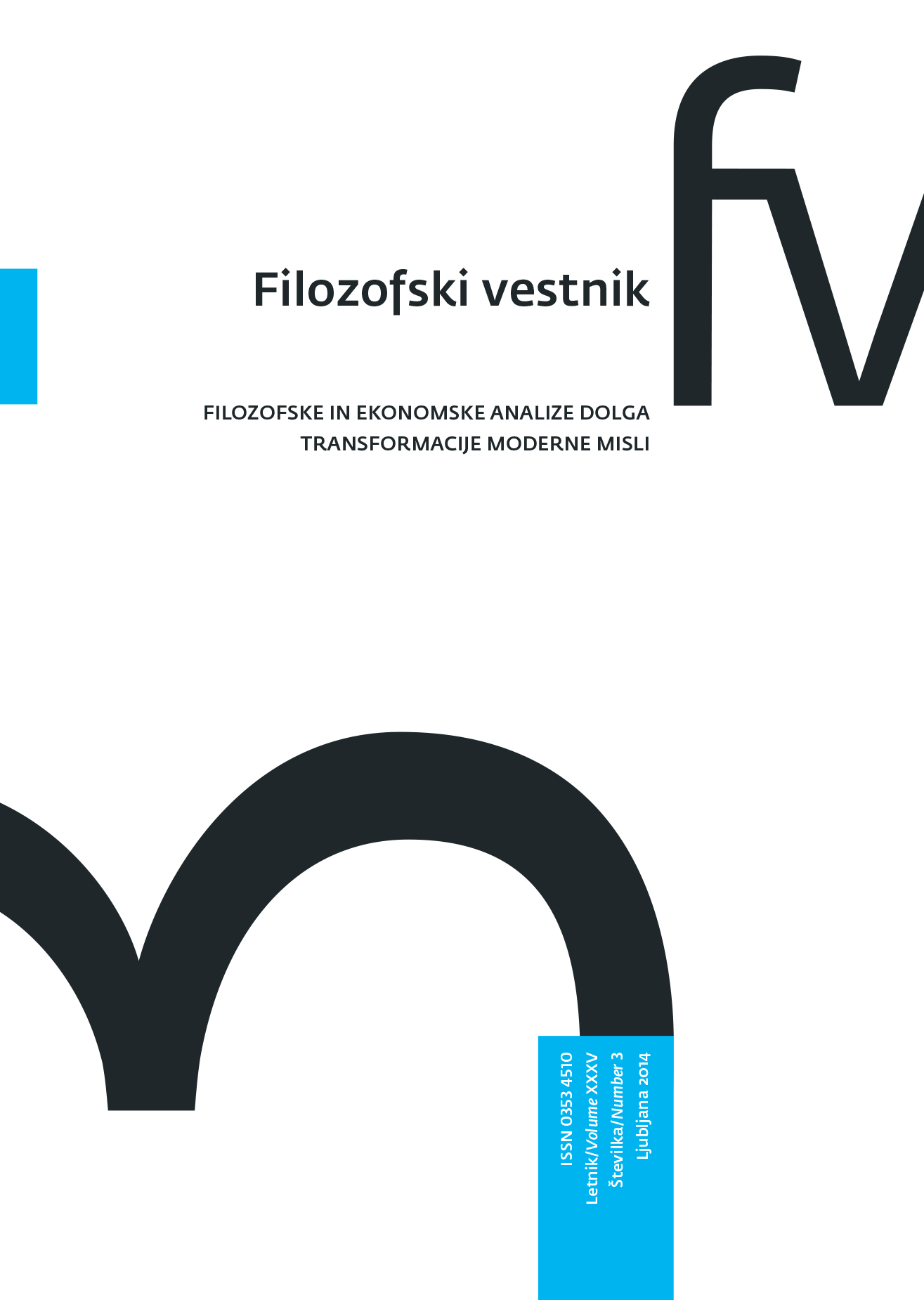Kant: dolg in nič. »Manj od ničle (nič)«
Ključne besede:
dolg, negativne velikosti, Kant, »manj kot nič«, zoperstavljenostPovzetek
Znano je, da so negativne velikosti svojo legitimnost od svojega nastanka dalje dobile skozi to, da so bile interpretirane kot dolg. S pretvorbo matematike v prirodoslovje pa je ta interpretacija postala nezadostna. Kantov spis iz leta 1763 o negativnih velikosti predstavlja poskus, da se po vzoru na Eulerjev argument o neizogibnosti iz dela Réflexions sur l'espace et le temps pokaže realnost (v fizikalnem smislu) negativnih velikosti izhajajoč iz tretjega Newtonovega zakona akcije in reakcije. Kantov pojem realne zoperstavljenosti (ki je v razmerju do Aristotela novost: »kvantiteta nima nobene konkretne zoperstavljenosti«, Cat 5b11) skuša dotedanjo interpretacijo – dolg, spraviti z novo – silo. V tekstu nas zanima težava, ki pri tem nastopi: potlačitev paradoksa negativnih velikosti (»manj od nič«), ki ga je lahko interpretativno zadovoljil le dolg. Drugače rečeno, paradoksna lastnost negativnih velikosti (da so »weniger wie Nichts«), ki jo je lahko za realno naredil dolg kot družbeni objekt, postane glavna prepreka za njihovo fizikalno intepretacijo.Prenosi
Podatki o prenosih še niso na voljo.
Prenosi
Objavljeno
2016-02-07
Kako citirati
Bojanić, P., & Todorović, S. (2016). Kant: dolg in nič. »Manj od ničle (nič)«. Filozofski Vestnik, 35(3). Pridobljeno od https://ojs.zrc-sazu.si/filozofski-vestnik/article/view/4231
Številka
Rubrike
Filozofske in ekonomske analize dolga
Licenca
Avtorji jamčijo, da je delo njihova avtorska stvaritev, da v njem niso kršene avtorske pravice tretjih oseb ali kake druge pravice. V primeru zahtevkov tretjih oseb se avtorji zavezujejo, da bodo varovali interese založnika ter da bodo povrnili morebitno škodo.
Podrobneje v rubriki: Prispevki





